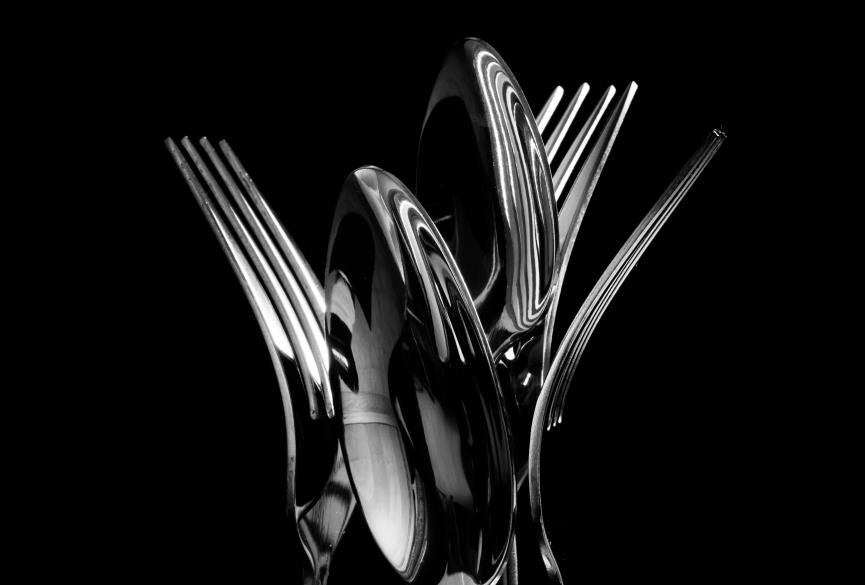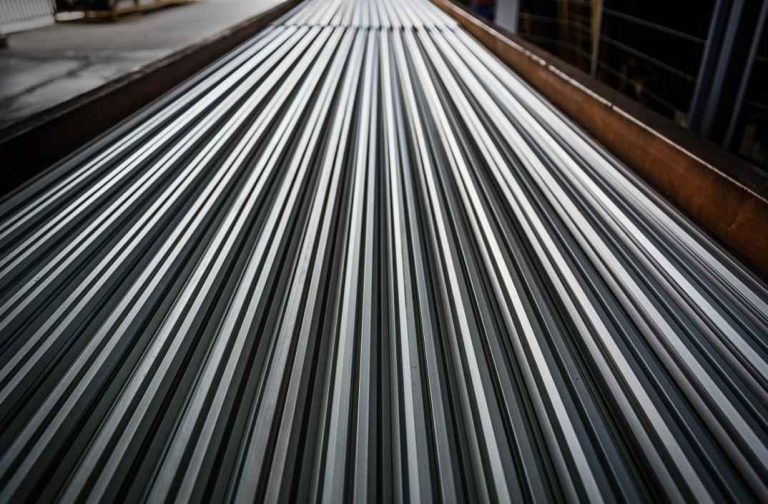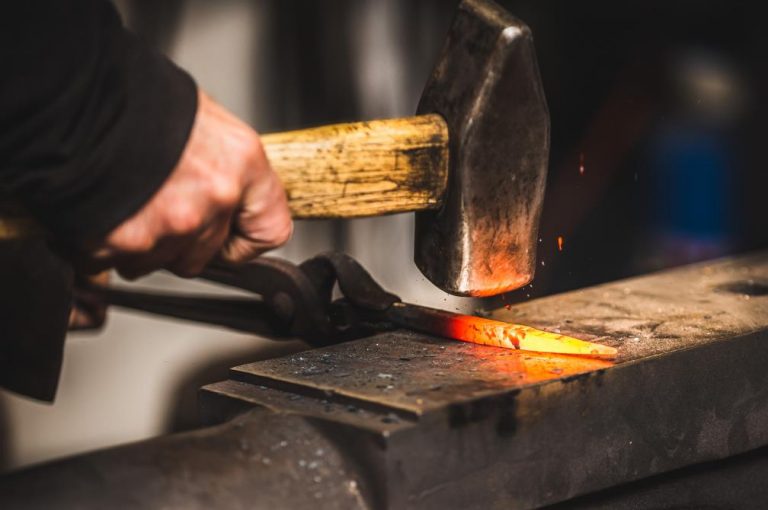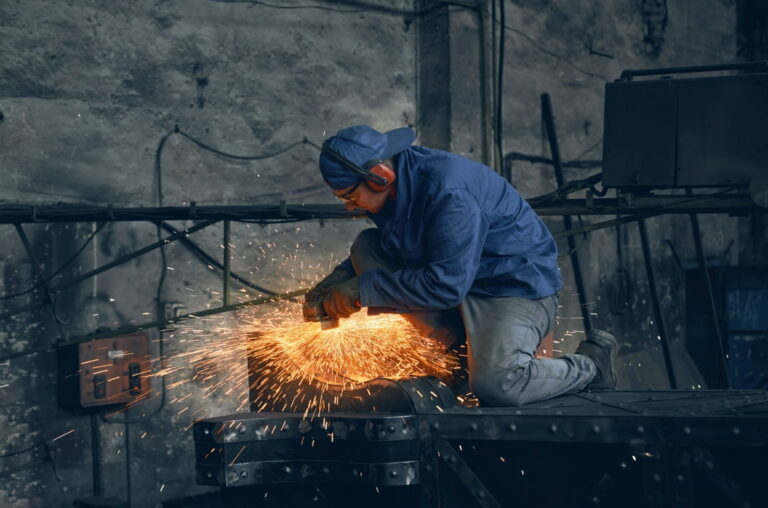There are three main types of stainless steel used for flatware and cookware. Namely, 18/0, 18/8, and 18/10. The few choices can help make a easier decision for your store. The steel for utensils isn’t the same as knife steel, which comes in greater variety. There is a lot to discuss on only these three different steels.
The numbers in 18/0, 18/8, and 18/10 stainless steels point out their chemical composition. Even a slight change in the composition can alter the steel’s physical properties. It’s worth knowing what each steel contains, its proportion and properties, and what kind of end product it makes for flatware.
Here’s everything about 18/0, 18/8, and 18/10 stainless steel to help you unveil the best for your store.
Meaning of 18/0, 18/8, and 18/10
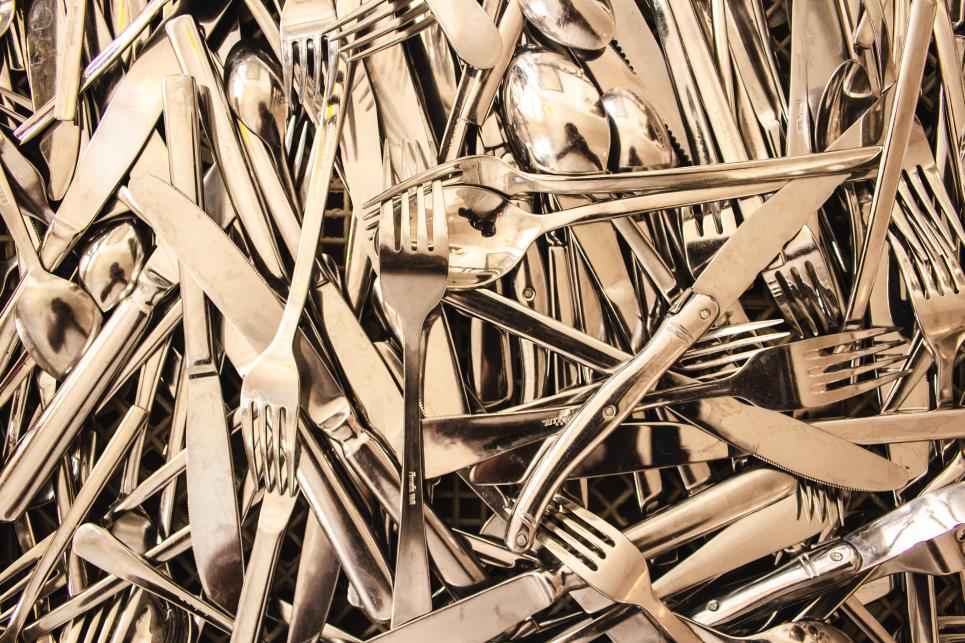
All three steels refer to the same thing – the percentage of chromium and nickel in the composition. The chromium comes first, and the nickel second.
For example, 18/0 stainless steel has 18% chromium with 0% nickel. 18/8 stainless steel, on the other hand, has 18% chromium and 8% nickel.
As expected, 18/10 stainless steel has 18% chromium with 10% nickel. However, manufacturers can also take 2% from chromium and replace it with molybdenum instead. This replacement doesn’t have a negative impact on 18/10 steel’s properties but lowers the cost noticeably for the buyers.
No matter the number, they’re all stainless steel, but not all three are equal. We can classify 18/0, 18/8, and 18/10 as stainless steel, but how well each resists corrosion, their durability and machinability, and costs differ.
The effects of chromium and nickel
Chromium is the main alloy that gives stainless steel its anti-corrosive abilities. Without it, there wouldn’t be stainless steel. Other than rust resistance, chromium helps steel with improved strength, hardening, and withstanding high temperatures.
Nickel isn’t as common as chromium in stainless steel, but it upholds a similar duty. Nickel boosts the steel’s corrosion resistance. Nickel also refines the grain size of the steel, enhancing its overall toughness.
Buy Wholesale Kitchen Knives and Start Scaling up with Us Today
Contact us and connect with a sales rep to get a free quote.
18/0 stainless steel
Composition: 18% chromium and 0% nickel
18/0 stainless steel is the only one of the three without the presence of nickel. Since 18/0 requires no nickel, it’s the most affordable of the three. While this is a good point, it also means it’s the one with the least corrosion resistance, shine, and durability.
18/0 stainless steel for flatware resists corrosion quite well but not so much in specific environments. If the products you sell are likely to end up in salty environments, 18/0 steel will disappoint in the long run. 18/0 stainless steel is also not particularly resistant to high heat, though the dishwasher’s heat won’t pose a problem.
Compared to the others, 18/0 steel’s downsides may be overwhelming. Still, it makes a logical buy for an average customer looking for practical and affordable products.
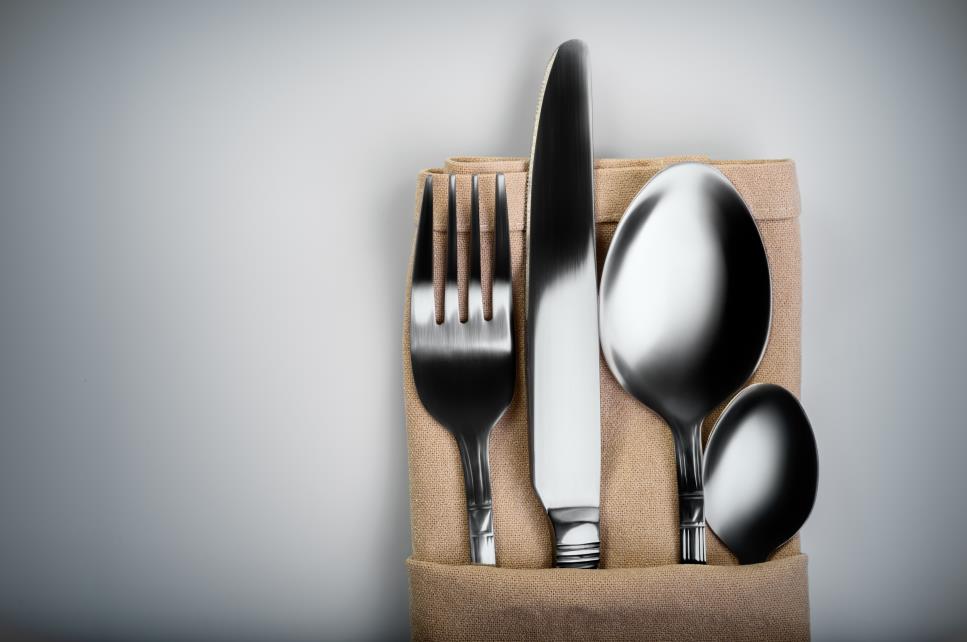
18/0 steel pros
- Affordable: 18/0 stainless steel is the least expensive out of the three for flatware and cookware.
- Availability: The affordable pricing paired with wide availability makes it a material you can source from many manufacturers.
18/0 steel cons
- Salt and acids: 18/0 stainless steel resists the typical rust but doesn’t do well in salty and acidic environments. When exposed continuously to salt and acids like vinegar, it can rust on the user.
- High heat: 18/0 stainless steel can easily deform when heated over a fire. That said, it doesn’t make an ideal cookware material but is fair for utensils and other common household items.
- Durability: All this brings us to 18/0 steel’s durability. As you can expect, it isn’t the best, and on top of all these, it bends without much force. Flatware made from 18/0 steel shouldn’t be taken out of its intended use and stored carefully to prevent permanent deformation.
18/8 stainless steel
Composition: 18% chromium and 8% nickel
18/8 stainless steel is a step up from 18/0. This goes for corrosion resistance, heat resistance, and overall durability. These come with a higher price, but what 18/8 has to offer is beyond worth it.
18/8 stainless steel has adequate amounts of nickel to withstand high temperatures up to 1600ºF (870ºC) without deformation. Since this is well below the temperatures needed for cooking most foods, it makes 18/8 an appropriate metal for daily used cookware.
Similarly to resisting deformation against high heat, 18/8 takes on acidic food well. You can find numerous marine-grade products made from 18/8 stainless steel, proving its usefulness against corrosion.
Furthermore, your customers won’t see any corrosion when using 18/8 cookware to prepare dishes with vinegar, citrus, and other acidic foods. All these make 18/8 steel a trusted choice for multiple applications in kitchen products.
18/8 steel pros
- Solid high heat resistance: 18/8 stainless steel can resist up to 1,600ºF. This is more than enough for cookware and utensils that get cooking action.
- Excellent saltwater resistance: With a markup of 8% nickel, 18/8 steel excels at keeping corrosion at bay in salt water. The same also applies to acidic foods that corrode steel fast.
- Good durability: The products made from 18/8 stainless steel won’t be as flexible. It makes a rigid product that maintains its shape throughout its lifespan.
18/8 steel cons
- Price: Although it’s more affordable than 18/10, the expense of 18/8 won’t go unnoticed.
- Extreme conditions: Overall, 18/8 is fitting for most uses, but if you’re anticipating selling products that withstand extreme conditions, you’ll need something better than 18/8. Luckily, 18/10 stainless steel is readily available for that.
18/10 stainless steel
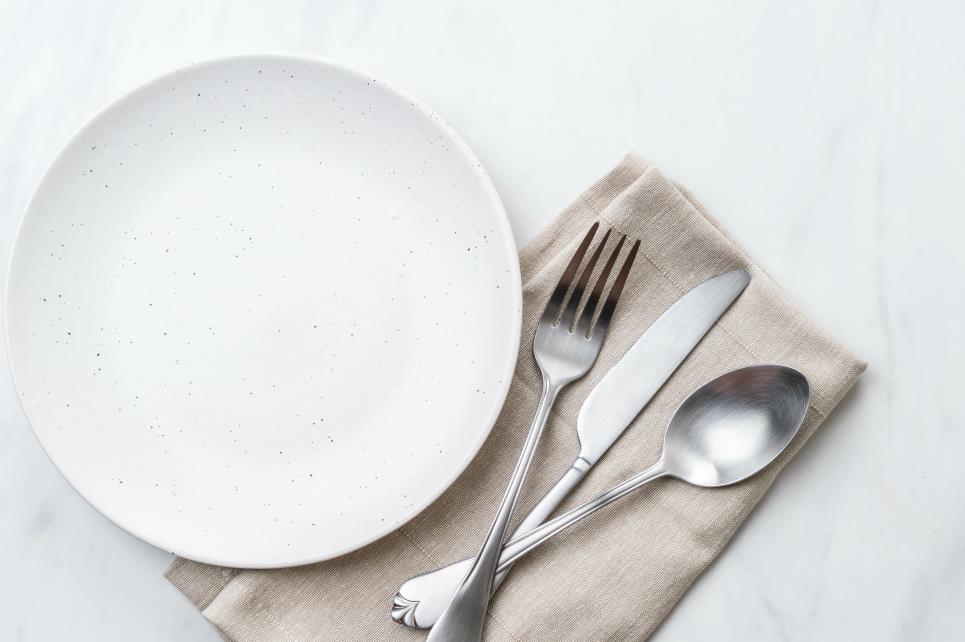
Composition: 18% chromium and 10% nickel
The difference between 18/10 and 18/8 is minor from the chemical composition. The 2% difference in nickel may not seem much, but it makes 18/10 easier to mold and machine. It also takes its corrosion resistance abilities a notch higher.
18/10 stainless steel products have a sturdy feel that proves their quality. When this feeling is put to the test, 18/10 steel outperforms 18/8 and 18/0 in all regards. Although this comes with higher prices, the products made from 18/10 steel are renowned for their durability.
18/10 stainless steel products, whether cookware or flatware, last long without deformation and resist high temperatures, with nonexistent worries of oxidation. 18/10 may be out of proportion for typical forks and spoons, but the high heat resistance is beneficial for cooking utensils like spatulas and ladles.
Overall, 18/10 stainless steel is much like 18/8 but with abilities that are a step up. It resists corrosion and high heat incredibly well, has a sturdy feeling, and takes a lot of beating to deform. It produces the shiniest flatware out of the three, with the highest amount of nickel it has.
18/10 steel pros
- Easy machinability: 18/10 can be molded into pretty much any product. Manufacturers don’t need special equipment to machine 18/10, allowing them to produce without additional tools.
- Incredible corrosion and heat resistance: 18/10 resists corrosion, including in acidic and salty environments, and high heats excellently. In fact, it resists high temperatures much better than 18/8 by a noticeable degree. 18/8 can degrade at 1,700ºF (925ºC), whereas 18/10 can withstand this temperature for a while.
18/10 steel cons
- Price: Naturally, 18/10 steel costs the most, as it has the highest nickel content. Some manufacturers may cut down on chromium and add 2% molybdenum instead to reduce costs. Although this makes no difference, it’s an industry practice to note.
What to consider when choosing flatware?
Like any other kitchen product, your customers will need to make some considerations before they find the best flatware. Here are some insights into choosing the best flatware. Make sure to ask plenty of questions to understand customer needs so you can guide them to the best products for their kitchen.
Rust resistance

The same as kitchen knives, utensils must resist corrosion. 18/10 stainless steel has the best corrosion resistance, but 18/8 is still more than enough for daily use. Since the latter is more affordable, we recommend 18/8 products. That’s unless your customers will use the products in salty waters nonstop. In that case, 18/10 would be a safer bet.
You can also opt for 18/0 stainless steel flatware. Although it won’t be as durable as the others in some ways, 18/0 steel produces corrosion-resistant flatware that meets the needs of home users in particular.
Heat resistance
Not all flatware gets exposed to high heat. This is a concern with cooking utensils more than forks and spoons. Even then, not all cooking utensils are subject to high heat. For example, steel skewers for grilling undergo constant high heat, whereas a spatula touches the surface of a pan once or twice.
You can base your decision on the flatware’s purpose. If it requires extreme heat resistance, 18/10 is the most sensible pick. If it’s a spatula, skimmer, or similar kitchen utensil, 18/8 or even 18/0 in some cases is a satisfying choice.
Maintenance
The maintenance needs of flatware are minimal compared to what a knife demands. The fear of corrosion isn’t as great with flatware, and since most are dishwasher-safe, cleaning isn’t a big challenge.
When washing in the dishwasher, the handle side must be down, and different types of flatware shouldn’t be mixed. Always wash spoons with spoons and forks with forks in the same compartment of the dishwasher basket, for example. As long as they are stored, washed, and dried properly after use, they will last many years.
Durability
Everybody wants their purchases to last for years, but not all are equal. When exposed to the same challenges, 18/0 will be the least durable, and this won’t come as a surprise. Likewise, 18/10 will be the sturdiest, whereas 18/8 falls a notch shorter.
That said, 18/10 is the most durable of the three, but not everybody needs this durability. It’s more for shops that sell products to be utilized heavily, like fast-paced restaurants and their kitchens. For most users, the durability of 18/8 is more than sufficient, and 18/0 satisfies home users.
Buy Wholesale Knives and Start Scaling up with Us Today
Contact us and connect with a sales rep to get a free quote.
How to choose between 18/0, 18/8, and 18/10 (for your store)
18/8 stainless steel meets the expectations of most users without the price being a huge burden. This applies to both business and personal use.
Narrowing the uses down to home kitchens, 18/0 will pass most tests a home cook challenges. If they ask for something better, you can always offer 18/8 steel flatware as an alternative.
A store that sells more to other businesses is better off highlighting 18/8 steel products with some 18/10 flatware in stock.
Having this said, 18/0 and 18/8 flatware are a necessity for shops catering to home users. 18/8 and 18/10 go the same way for shops that appeal to other businesses and professional users.
LeeKnives is the manufacturer of various kitchen products at varying qualities, prices, and MOQs. Check our wholesale products from our homepage, and don’t hesitate to reach us to get a quote for the products that interest you.
